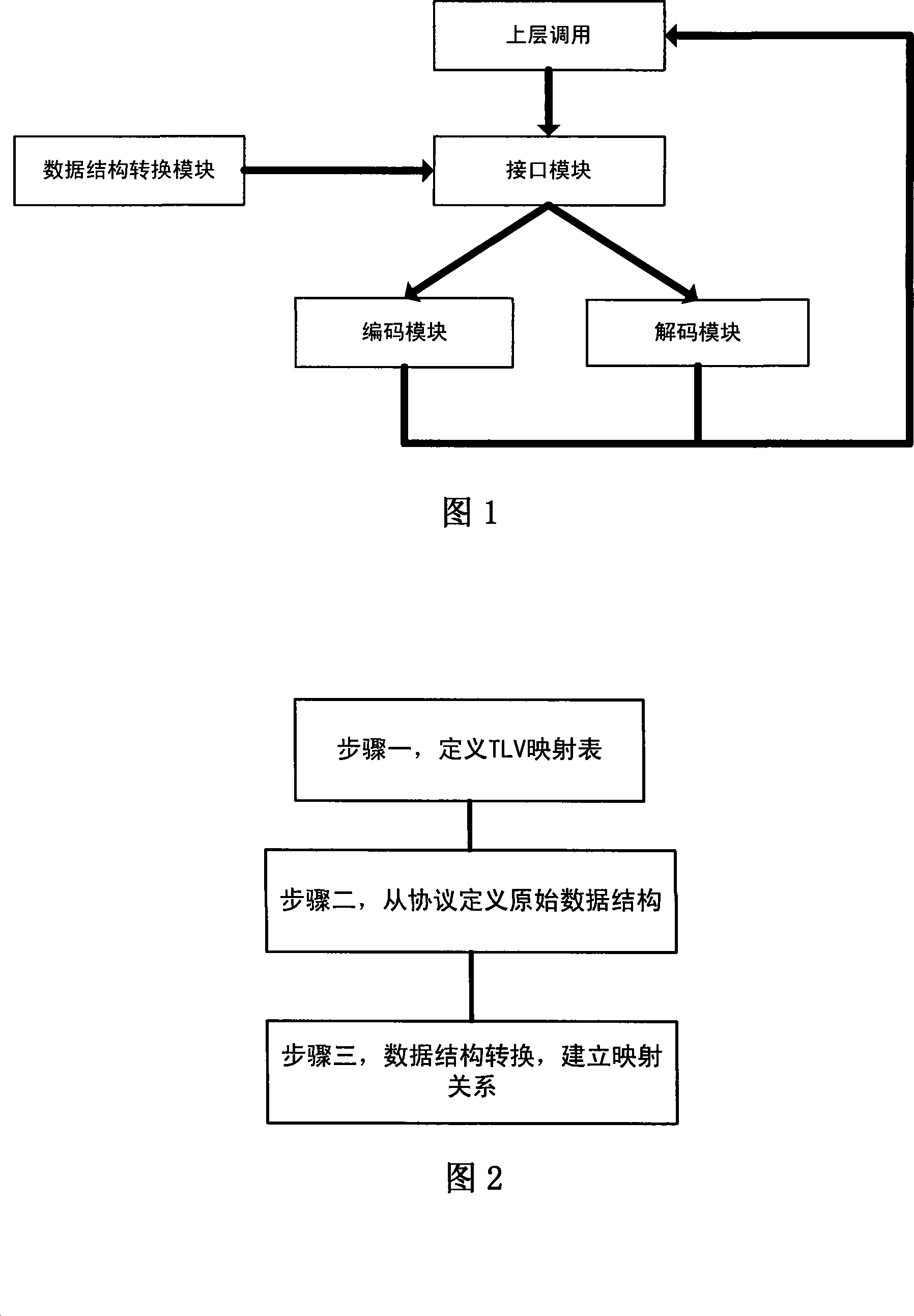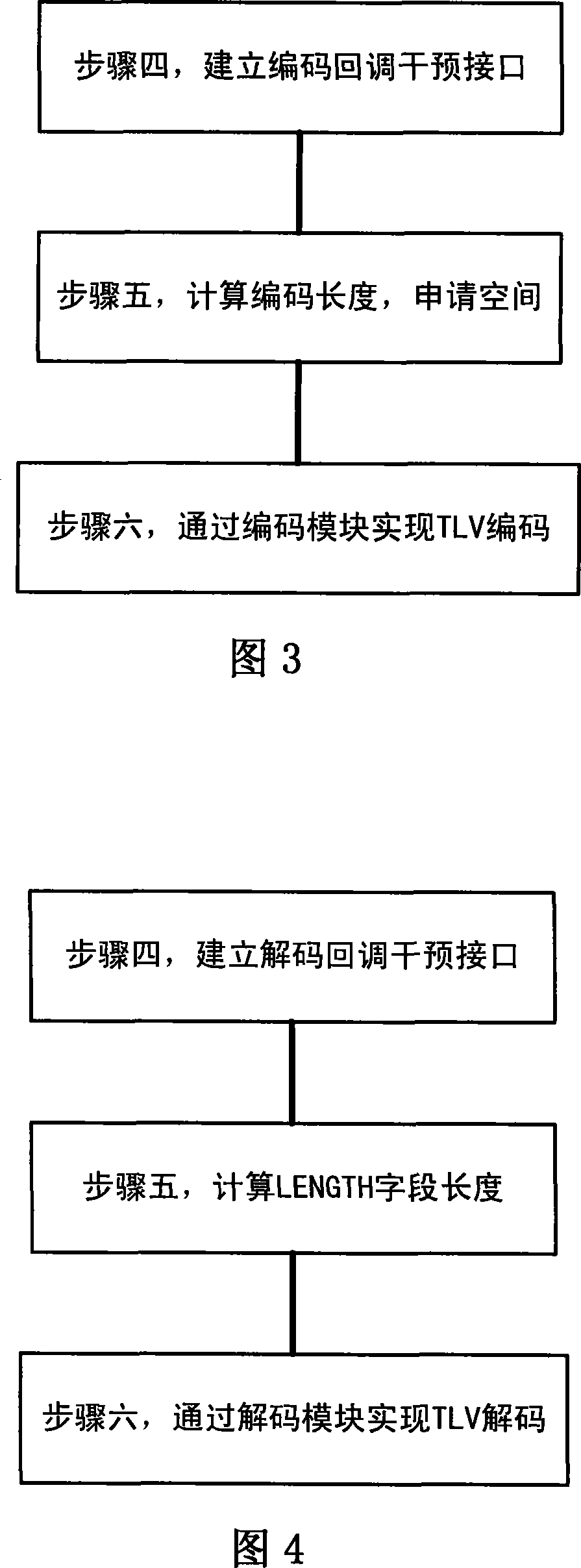Method for implementing encoding/decoding of WiMAX system information
A coding, decoding and message technology, applied in transmission systems, radio transmission systems, electrical components, etc., can solve problems such as failure to achieve general purposes, and achieve the effect of easy expansion, easy implementation, and clear and simple thinking
- Summary
- Abstract
- Description
- Claims
- Application Information
AI Technical Summary
Problems solved by technology
Method used
Image
Examples
Embodiment Construction
[0027] The purpose of the method of the present invention is to provide a method for implementing TLV encoding and decoding in a WiMAX system (base station, terminal), for building a simple, efficient, easy-to-implement, and easy-to-expand module to meet the needs of development based on 802.16e and Its subsequent protocol software requirements.
[0028] The basic principle of the inventive method is as follows:
[0029] For a message that requires TLV encoding, since it is described by C language, and the encoding and decoding rules are not limited to any programming language (that is, the encoding and decoding rules only conform to the TLV specification), the encoding program must first try to Transform the data structure described by the C language into a data structure conforming to the TLV grammar (mainly to determine the one-to-one correspondence between the data types in the two environments), and then use specific coding rules to start coding. On the contrary, for the...
PUM
 Login to View More
Login to View More Abstract
Description
Claims
Application Information
 Login to View More
Login to View More - R&D
- Intellectual Property
- Life Sciences
- Materials
- Tech Scout
- Unparalleled Data Quality
- Higher Quality Content
- 60% Fewer Hallucinations
Browse by: Latest US Patents, China's latest patents, Technical Efficacy Thesaurus, Application Domain, Technology Topic, Popular Technical Reports.
© 2025 PatSnap. All rights reserved.Legal|Privacy policy|Modern Slavery Act Transparency Statement|Sitemap|About US| Contact US: help@patsnap.com


